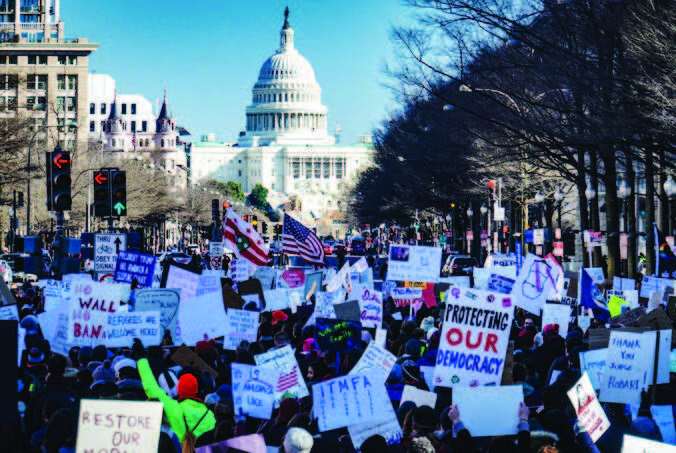
Although it is unlikely that the January 6 riots on the U.S. Capitol will be explained to everyone’s satisfaction, even after late July’s public hearings on the issue, the role of religion in the revolt is becoming clearer, at least as far as who the actors were and the dynamics driving them. In the Washington Post (July 6), Michelle Boorstein reports that many religious observers see the Capitol attacks as an example of the religious ferment that presaged movements such as Mormonism and Pentecostalism. Most observers and specialists note how the religious element of the protests and subsequent riot were largely leaderless and disconnected from clergy, congregations, and denominations (although some church members were bussed in for the earlier rally). Aside from protestors and rioters who were part of alternative and syncretistic spiritualities, such as the much-publicized horn-wearing “shaman,” the participants saw themselves as Christian rebels, or as one woman told a judge, a “free-living soul.”

Source: Ted Eytan (licensed under Creative Commons ShareAlike 4.0 International Attribution).
Paul Froese of Baylor University says that Christian nationalists, who blend nationalist rhetoric with Christian themes, are prime examples of such disconnected Christians. In a recent paper, he reports that Americans who have Christian nationalist beliefs and don’t attend church are more likely to have voted for and to support Trump compared to those who attend more regularly. The Post article also cites University of Chicago political scientist Robert Pape, who found in his research on the January 6 rioters that any religious role in the event was not due to deep indoctrination or education. He said that such individuals “tend to have a thin knowledge and understanding of their religion. Recruits tend to be making individual decisions about the ideologies they want to follow and even what it means. It’s very much at the level of the individual.” Going through the court records of January 6 rioters, Boorstein concludes by profiling some of them, including one former pastor of a “cowboy church” who left his congregation after his arrest, and a woman with a Pentecostal background who dropped out of church and now considers herself a healer who was a preacher for Christ on January 6.